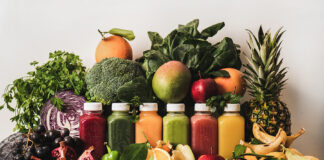
There’s been much speculation about what directions the food and beverage industry will head this year. In large part, the top anticipated trends have focused on consumer eating behaviors, like increasing demand for plant-based foods and functional ingredients. quench, a food and beverage marketing agency that has been publishing trends reports for the past 12 years, takes a different approach by looking at the practices of the industry as a whole.
Here’s what they think will be big in 2021.
1. Equity
Equity and diversity have taken center stage in many areas over the past year. In the food industry, the conversations have ranged from increasing diversity in leadership positions to ensuring equal access.
quench sees this trend playing out in three main ways in 2021:
- Wellness products, such as organics and nutritional supplements, will move from the luxury market to the mass market by becoming more affordable.
- Big brands and incubators will provide funding for small independent producers.
- Food brands will move away from “empty social media sentiment and actions” to meaningful initiatives to serve the underserved.
2. Sustainability
Sustainability, what quench calls “climate diets” continues to be a high priority for many consumers, particularly younger ones.
- quench notes that “carbon-positive practices are becoming more than just a trust-building exercise to earn consumer loyalty — they are evolving into a modern business imperative.”
- People around the world continue to move to cities, which brings new challenges in creating sustainable food sources.
- New technologies are being developed to support the bees and other pollinators that the agriculture industry relies on.
3. Digitizing the supply chain
With more shoppers turning to e-commerce during the pandemic, retailers are rethinking their use of space.
- Microfulfillment, in which orders are filled from retail store locations near the customer rather than from a large central warehouse, powered by automation helps grocers pick orders 10 times faster, according to quench.
- New fulfillment models, including on-demand delivery, fulfillment centers, and dark kitchens, are gaining traction.
4. Phytonutrients
Finally, the one ingredient-based item on the list is phytonutrients, protein-packed plant-based compounds associated with immune function. quench believes these products will gain popularity over the next five years.
- Upcycled rapeseed will be an alternative to soy, which currently makes up 95% of plant-based proteins.
- The algae food and beverage market may top $5 billion in the next five years, according to the report.
- Efforts to classify phytonutrients “will allow companies to facilitate the production of these products to support the explosion of consumer interest.”
For more information about all of these trends and examples of companies that are already spearheading the efforts, download the report.









